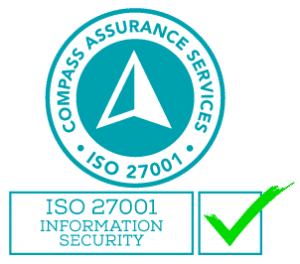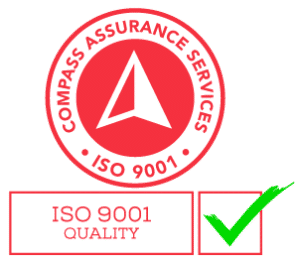Small businesses are faced with a unique set of IT challenges: from safeguarding data against sophisticated cyber threats, to managing limited budgets while keeping pace with technological advancements.
Navigating these obstacles is crucial for maintaining smooth day-to-day business processes, and for forward-thinking business owners, to keep up with the competition and ensure long-term growth.
This article will explore pressing IT challenges confronting small businesses, and outline practical solutions to overcome them.
Challenge #1: Budget Constraints
Adhering to a budget limits certain opportunities, especially when it comes to IT investments. The cost of technology can be a significant strain on limited resources. But neglecting IT needs is not a viable option; modern digital technology enables businesses of all industries to work faster and provide the services their customers want, in a way that suits them. The key is to find a balance between affordability and functionality.
These programs, often free or low-cost, can provide solid solutions without the hefty price tag of mainstream software. For example, alternatives to expensive office suites or graphic design tools can be just as effective for a fraction of the cost.
Cloud-based applications and storage are a cost-effective option, allowing small businesses to reduce the need for expensive on-site infrastructure. This not only cuts down initial investment costs – it offers greater scalability: you pay only for what you use, and it’s easy to scale up as your business grows.
Lastly, considering the scalability of IT infrastructure is crucial. Investing in modular and scalable technology allows a business to expand or reduce its IT capabilities as needed, without over-committing financially from the start. It’s about being strategic with IT spending, focusing on what’s necessary now while keeping an eye on future needs.
Challenge #2: Technological Advancements
Keeping abreast of new advancements is essential for staying competitive – but it can be daunting, especially with limited time and resources.
One practical step is to become part of tech forums and online communities. These platforms are invaluable for staying updated on the latest trends and technologies. They also provide an opportunity to engage with other small business owners and IT professionals who can offer insights and advice.
IT service providers can offer expert advice on what technologies are best suited for your business and help integrate them into your existing operations.
Challenge #3: Infrastructure Management
Effective management and maintenance of IT infrastructure are pivotal for small businesses, yet it often presents a daunting challenge. An optimally functioning IT setup is not just about having the right hardware and software; it’s about ensuring these elements work seamlessly together, providing reliability and efficiency.
A well-managed IT infrastructure can lead to increased operational efficiency, reduced downtimes, and a more agile business model. It’s about creating an environment where technology supports and enhances business activities, rather than being a source of constant challenge and frustration.
One solution is to consider managed IT services. Such services take the burden of day-to-day IT management off the shoulders of business owners, allowing them to focus on core business activities. Managed services can provide proactive maintenance, timely upgrades, and expert support, all while potentially reducing overall IT costs due to economies of scale.
Outsourcing certain IT functions can also be beneficial. This approach allows businesses to access high-level expertise and technology without the need for in-house specialists. Whether it’s cloud services, cyber security, or network management, outsourcing can offer customised solutions tailored to the specific needs of a small business.
Challenge #4: Lack of IT Expertise
The rapid pace of technological change means that IT expertise is in constant demand. For small businesses, finding and retaining skilled IT staff can be a significant challenge, often compounded by budget constraints. However, a knowledgeable IT team is essential for effective technology management and problem-solving.
Investing in training for existing staff is one approach to bridging this skills gap. By upskilling current employees, businesses can build their internal IT capabilities. This not only improves the efficiency and effectiveness of the business’s IT systems but also enhances staff morale and loyalty.
Another strategy is to establish connections with local universities or technical institutes. These institutions can be a source of fresh talent, either through internships or graduate recruitment programs. Collaborating with educational institutions can provide a steady pipeline of skilled individuals attuned to the latest technological developments.
Challenge #5: Regulatory Compliance
Compliance with IT-related laws and regulations is a crucial, albeit often overlooked, aspect of business operations. This is especially true in the context of data protection and privacy laws, which have become increasingly stringent across the globe.
Small businesses must be aware of the regulations that apply to their operations. Non-compliance can result in significant penalties, not to mention damage to the business’s reputation.
To ensure compliance, businesses should first conduct a thorough audit of their IT systems and practices. This audit should identify any areas of potential non-compliance. Following this, implementing tools and practices such as data encryption, secure data storage, and regular compliance training for employees is essential.
Utilising compliance management software can also streamline the process, ensuring that businesses stay on top of regulatory changes and requirements. Such software can provide reminders for necessary updates and help in maintaining a comprehensive record of compliance efforts, which can be invaluable during audits.
Challenge #6: Business Continuity and Disaster Recovery
Unexpected incidents – from natural disasters to cyber-attacks – can disrupt operations and lead to significant data loss, operational downtime, or data breaches, all with devastating consequences.
Developing a disaster recovery plan involves identifying critical IT systems and processes and establishing procedures to recover them rapidly in the event of a disruption. This includes regular data backups, which should be conducted both onsite and offsite, preferably in the cloud, for added security and accessibility.
Business continuity planning goes a step further, focusing on maintaining business operations during a crisis. This includes identifying alternative methods of operation, such as remote work capabilities, and ensuring employees are trained to respond effectively in various scenarios.
Engaging with a managed service provider (MSP) can significantly increase the likelihood of a business’s recovery from an unexpected disaster. MSPs offer expert guidance in developing and implementing data backup systems, disaster recovery plans, and emergency methods of operations. They ensure the disaster recovery and business continuity plans are comprehensive, up-to-date, and tested regularly for effectiveness.
Find the Right Solutions and Solve Your Business’s IT Challenges
While these issues present daunting challenges, they also offer opportunities for growth, efficiency, and competitive advantage. By addressing them, and preparing appropriately for future hurdles, small businesses can turn potential vulnerabilities into strengths.
Steadfast Solutions can help you navigate these challenges with expertise and confidence. Our team of IT experts will advise you on the best solutions to handle any challenge that comes your way, keeping your business poised for growth and able to take on opportunities as they come your way.




